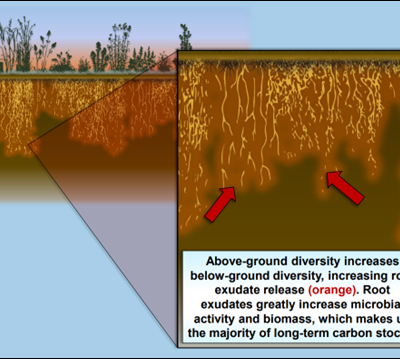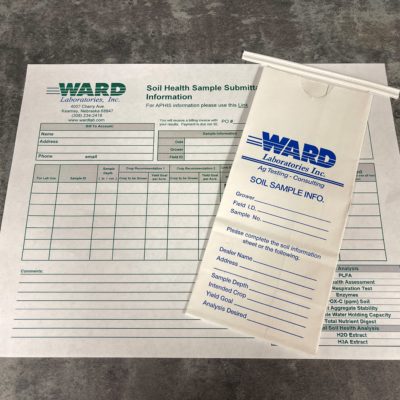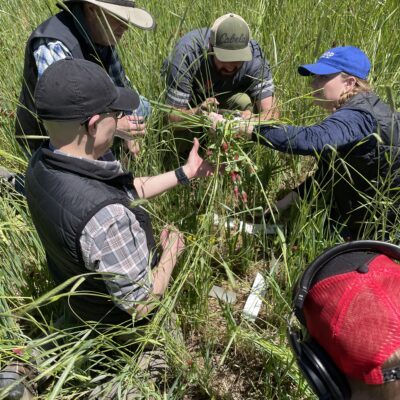Over the past year, our soil experts have added the Soil Health Assessment test. Soil health is the overlapping areas of the chemical, physical and biological properties of the soil. Previously, the chemical or nutrient status of the soil has been the main focus of soil testing laboratories. Recent addition of biological properties have become synonymous with regenerative agriculture and soil health. Soil physical properties are also key indicators of soil health.
Sampling for Soil Health Assessment
The first step in soil sampling is to identify a uniform sampling area. Look for soil, yield and management uniformity. If you just want to take one sample from a field, sample the largest uniform area. If it is a large field with variability, samples could be taken from each soil zone. Soil sample depth consistency is very important. The suggestion is either 0-8 or 0-6 inch depth. Ten to 15 cores (0-8 or 0-6 inches) should be taken from the sampling area and mixed together for a composite sample. Please send about 1 pound or 1 pint of soil for testing.
What is tested?
The Soil Health Assessment ties together the three properties of soil health:
- Chemical
- Biological
- Physical
The chemical indicators you can expect to see on your report include:
- pH
- Organic Matter
- Phosphorus
- Exchangeable Potassium, Calcium, Magnesium, Sodium, CEC, and % base saturation of each element
- Sulfur
- DTPA extractable Zinc, Iron, Manganese, and Copper
The biological factors you will see include:
- CO2-C 24 hr. Respiration rate
- Water extractable organic carbon, total nitrogen, nitrate and ammonium
- Water extractable organic nitrogen
- % MAC (microbial active carbon)
- Water extractable C:N ratio
The physical components include:
- Water Stable Aggregates (Modified Method)
Why the Soil Health Assessment?
Some of the highlights of this report are the water stable aggregates , soil respiration, water soluble ammonium and mineralizable organic nitrogen for calculating N recommendations. Other fertilizer nutrient recommendations are calculated from standard soil testing methods.
The water stable aggregate method has been modified from the original form to include large sand particles that act as aggregates. These sand particles and the water stable aggregates will increase the infiltration of rainfall or irrigation water.
Soil respiration is an indication of the microbial biomass present in your soil. Meanwhile, the water extractable soil carbon is the ‘food’ available to those soil microbes. This report can help you keep these values in balance. In other words, you can use this report to ensure you are providing enough carbon to support the microbial community in your soil. The addition of cover crops is a common way to add carbon to the soil for the microbes.
Finally, when requesting the Soil Health Assessment, you will receive calculated fertility recommendations in your report. These calculated values include nitrogen in the soil as NO3, NH4, and organic nitrogen release.
In conclusion, measurements of three soil properties: chemical, biological, and physical indicate progress in soil health. Chemical analysis of soils has become common practice to responsibly manage amendments. Biological analysis has been the source of a lot of excitement in association with soil health and regenerative agriculture. Finally, we are adding physical properties to the soil health test. Analysis of these three soil properties is our Soil Health Assessment Test.




